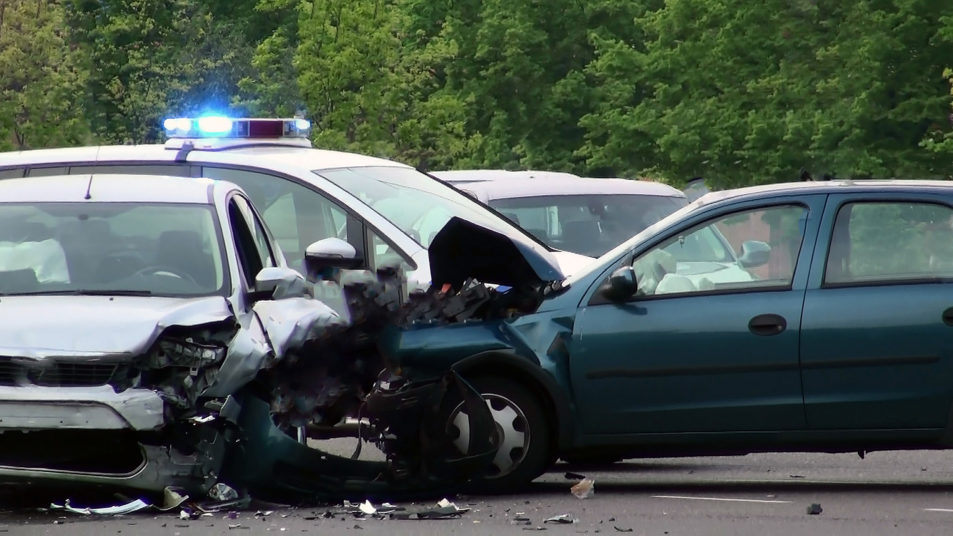How Much Damage Occurs in a 30 MPH Crash?
How fast is too fast to drive? Speed limits are designed to reduce the risk of accidents. The limits are based on numerous factors and calculations that determine the maximum safe speed for a given stretch of road.
Speeding is a leading cause of car accidents. During 2017, speed was a contributing factor in about one-fourth of all fatal traffic accidents. As a driver increases the speed of the vehicle, several factors come into play:
- The risk of an accident increases
- It takes longer for the vehicle to stop
- There is an increase in the severity of the crash and crash injuries
- Occupant protection equipment is not as effective
While there is a great deal of focus placed on excessive speeds, crashes occurring at just 30 mph can result in considerable damage, traumatic injuries, and loss of life.
What Happens During a Collision?
When a vehicle collides with another vehicle or object, the vehicle absorbs some of the energy from the impact and slows down as a result. Simultaneously, its frame may crumble and be crushed because of the force of the impact.
Even in a 30 mph crash, a vehicle can sustain substantial damage to the frame and other components. The amount of damage to the vehicle also depends on other factors such as:
- The age, model, and condition of the vehicle
- The type of vehicle or object struck
- Whether the driver applied the brakes before the collision
- The speed of the other vehicle
- The type of crash that occurred (i.e., head-on collision, sideswipe, rear-end accident, side-impact, etc.)
When accident reconstructionists investigate a crash, they consider the vehicle’s speed and all other factors when examining the vehicle’s level of damage.
Impact on the Vehicle’s Occupants
At the time of the crash, the people in the car continue moving at the same speed the vehicle was traveling until they are stopped for an external force. The external force could be the seatbelt or airbags. It could also be hitting the dashboard, window, or the back of a seat.
Wearing a seatbelt is the best way to protect yourself in a crash. The seat belt absorbs much of the energy that your body would absorb if it were thrown into the dashboard or another object within the vehicle. By absorbing some of the energy from the crash, the seatbelt helps reduce the severity of injuries or prevent them altogether.
Impact on Internal Organs
Some sources refer to this stage of a car wreck as the internal collision. Even though a passenger is wearing a seatbelt and the seatbelt stops the person’s body from moving forward, the person’s internal organs remain in motion until they strike bones or other internal organs.
For example, traumatic brain injury can occur even though the occupant did not hit their head during the crash. The sudden stop in forward motion causes the brain to strike the skull, which can cause contusions, bleeding, tears, and other damage to the brain. Brain damage can result in permanent disabilities and impairments.
A 30 mph crash has the potential of causing traumatic organ damage to the brain, heart, kidneys, liver, and other organs.
Filing Personal Injury Claims for a Low-Speed Car Accident
Car accidents that occur at lower speeds can still result in significant injuries and damages. However, many insurance providers downplay low-speed car accidents by claiming that the lower speeds reduce the severity of injuries. However, there are many studies and sources that contradict those allegations.
It is best to see a doctor as soon as possible after a car accident, regardless of the severity of the crash or whether you believe you sustained injuries. Internal organ damage, whiplash, brain injuries, and other types of injuries may be difficult to recognize without medical treatment.
Furthermore, documenting your injuries with medical records immediately after the accident makes it more difficult for the other party to argue that the crash did not cause your injuries.
Your doctor may tell you to rest and report any changes in your condition. Even so, you have a record of the symptoms you experienced after the crash in case your condition worsens, or you discover an injury that was not known immediately after the accident.
Do Not Give In or Give Up
Do not give up the pursuit of your personal injury claim if you sustained injuries in the crash. If the other driver and the insurance company continue to deny your injury claim, seek assistance from an injury lawyer. Make sure you know your legal rights and take steps to protect your best interests.

Leave a Reply